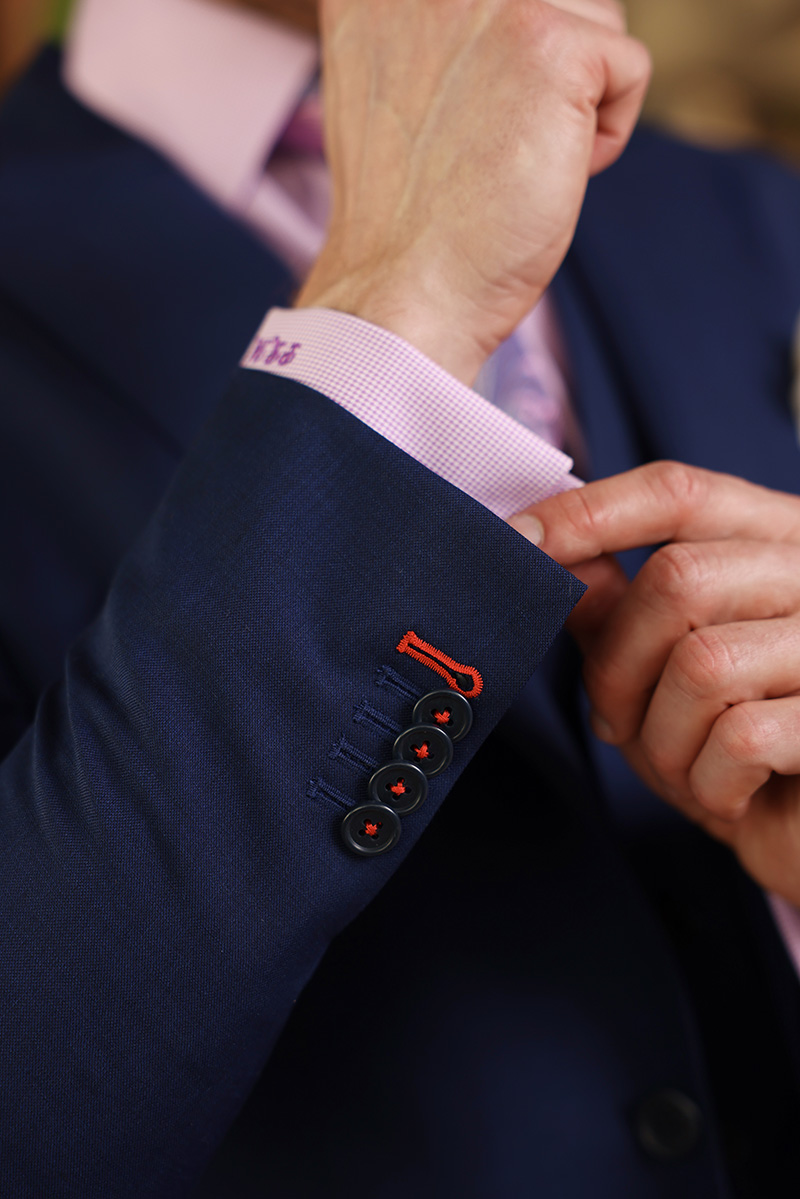
For the past five years, headlines have sounded the death knell of the suit. And yet, despite predictions of board meetings dominated by hoodies and trainers, the suit endures. Tech billionaires might dress down, but there’s an undeniable soft power exuded by a good suit.
Power dressing isn’t an entirely contemporary concept – the modern suit (the OG power dressing uniform) actually emerged in the mid-19th century, and cut, fit and cloth quickly became a kind of visual shorthand for status. By the 1930s, the Duke of Windsor had redefined masculine elegance with the sack suit, softening the structure but not the authority. The postwar era saw the emergence of a clean-cut, conservative power suit as a corporate weapon, the sort favoured by Don Draper.
Then came the mods, Italian tailoring and a newfound sense of theatrical flair. But it was the 1980s that delivered the archetypal “power suit”: bold pinstripes, padded shoulders and an aggressive silhouette that mirrored the era’s obsession with dominance and success.
Since then, the shoulder pads might have softened, but the power remains. The question is, gents, what does power dressing look like today, and what are the rules?
The foundations of power dressing: structure and fit
Too many men hear the words power dressing, think ‘shoulder pads’ and run in the other direction. But power dressing is about so much more than making yourself look bigger – it’s about enhancing the natural lines of your body to project confidence and authority. A well-tailored suit achieves this by emphasising key aspects – the slope of the shoulders, the taper of the waist, the length of the spine – to convey strength and self-assurance.
A suit that fits impeccably not only flatters the physique but also boosts self-confidence. Research shows that wearing well-fitted clothing can enhance cognitive function, leading to improved decision-making and interactions. This psychological shift translates into a more authoritative presence in professional settings. Structure signals control and clarity, so a well-fitted suit also suggests that its wearer is organised, decisive and confident in their role. Powerful, in essence.
When it comes to structure and fit, consider shoulder alignment. Ensure the shoulder seams align precisely with your natural shoulder line to create a balanced silhouette. The hem of the jacket should fall just below the seat, and the sleeves should sit just above the wrist bone. A slight taper at the waist will enhance the V-shape, emphasising the chest and shoulders and adding definition to the look.

Fabric: texture, weight and personality
Fabric says a lot. Tactile fabrics, like worsted wool, effortlessly convey professionalism and polish, while fabrics like tweed nod to heritage and add intellectual gravitas. Traditionally, heavier wool and fabrics like flannel have been associated with power dressing, offering a substantial drape that exudes seriousness and authority, but they aren’t always practical for warmer climates. Lighter fabrics, such as tropical wools, are a good compromise – lightweight, breathable and ideal for those who wish to maintain a sharp silhouette without succumbing to the heat.
Pinstripes have historically been associated with power dressing, for very good reason. Those ultra-thin parallel lines, formerly associated with bankers, elongate the figure and imbue the wearer with a sense of assertiveness and confidence – basically, a bit of pomp and class.
And what of colour? Colours like charcoal and navy blue exude sophistication, authority and seriousness, making them the preferred choice for more serious settings, but don’t ignore the earth tones for a more relaxed but still professional power look.
The finishing touches: shirts and accessories
The art of power dressing lies not only in the suit but in the supporting elements. A well-cut, crisp white or ice blue shirt offers an unmistakable sense of refinement, while subtle textures like herringbone add depth without distracting too much. Pulling at the buttons does not say power dressing. Nor does gaping fabric around the waist. Fit is everything.
When it comes to collars, there are no hard and fast rules, it’s all about what suits your face shape. A classic point collar is a gold standard for a reason, but a spread (or semi-spread) collar can look modern and assertive. Save the mandarin collar for Dress Down Friday.
Accessories aren’t just decorative, they’re communicative. While a tie is a good opportunity to show a pop of personality, avoid novelty prints at all costs. A silk tie in a solid navy, burgundy or forest green conveys a sense of stability and maturity, while patterns like subtle stripes and small spots nod to tradition and professionalism.
There is a place for cufflinks and pocket squares when power dressing, but these should be used judiciously. Stick to subtle silver or gold cufflinks, and remember that a pocket square always works best when it complements, rather than matches, your tie.
Finally, the watch. In the 1980s, power dressing was all about yellow gold and big chains – the larger and shinier, the better. Rolex, Cartier and Omega are all welcome in today’s power-dressing wardrobe, but in an era of smartphones and smartwatches, nothing says ‘power’ quite like a traditional timepiece. A simple, slim dress watch on a leather strap that sits comfortably beneath a cuff and offers a functional nod to maturity.

Footwear fundamentals
Countless studies show that people form a lasting judgement based on footwear, so it’s no surprise that what you put on your feet is an essential component of power dressing.
These days, power dressing your feet is all about polish, fit and functionality. Oxfords, with their closed-lace construction and sleek lines, speak seriousness. Derbies are slightly more relaxed, while loafers and monk straps project an understated confidence. Hybrid dress shoes with cushioned or rubber soles and traditional uppers are becoming increasingly popular today, too.
What really matters is the presentation. A shoe with scuffed toes or worn-down heels quickly loses its authority. They should be regularly conditioned, polished and resoled.
And remember, match your socks to your trousers, not your shoes.
Power in the details
So, you’ve probably gathered by now, gents, that the real secret to power dressing is intention. Dressing well tells the world that you take yourself and your work seriously. There are no shortcuts either – every element needs to earn its place, from the fit to the footwear. The suit may have evolved as trends come and go, but its function hasn’t changed at all. It’s all about influence and presence.
Need to refresh your wardrobe and master powerdressing? Pop into your favourite store today for a consultation.
Author: Gary Sweeney
